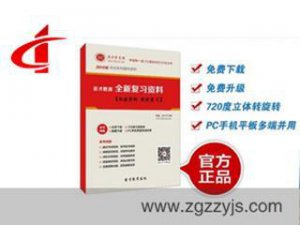|
Remedies for non-performance:Perspectives from CISG, UNIDROIT Priniciples and PECL INTRODUCTION The growth of international trade makes some kind of unification necessary. Increased trade overseas has drawn attention to the problems that are caused by the different ways in which countries have chosen to regulate international sales. And the legal community has tried to facilitate overseas trade through efforts to harmonize national laws by legislative or non-legislative means. Against such a background, the analysis in this contribution is focused on the CISG, UNIDROIT Principles and PECL -- three of the most important international instruments for the regulation of international commercial transactions which combine elements from both civil law and common law systems. In so doing, this contribution provides a comparative analysis of these instruments. It is merely thought that comparison is, probably, one of the most efficient ways to underline some of the unique features inherent in some legal regimes and to develop solutions to existing theoretical problems. However, as most of the authors dealing with the vast domain of this area would have done, the author in this contribution has never meant to make an exhaustive examination of international commercial law, bearing in mind that the ability of a single contribution to deal with its many issues is limited. The approach offered here is to review some of the key issues frequently befell in international trade, based on those generally accepted principles or elaborate rules as evidenced by international restatements or conventions and usages and practices or so-called lex mercatoria that is widely known to and regularly observed in international commercial transactions. Particularly, it is said that no aspect of a system of contract law is more revealing of its underlying assumptions than is the law that prescribes the relief available for non-performance (breach). Issues relating to the remedial provisions are difficult and central substantive issues, which will no doubt be the focus of a large part of the discussion and deliberation surrounding application of commercial law on both a domestic and an international level. Therefore, the study in this contribution focuses, in light of traditional and modern theories, on the remedial scheme established under each of the three bodies of rules, namely Part III (partial) of the CISG, Chapter 7 of the UNIDROIT Principles and Chapters 8 and 9 of the PECL. In practical terms, these sectors are the substantive heart of the particular instruments. It is where the corresponding solutions to a large proportion of real world disputes in commercial transactions are to be found. The comparative analysis contained speculates on the potential similarities and differences of these sectors, intending to enunciate rules which are common in international commercial law and at the same time to select the solutions which seem best adapted to the special requirements of international trade. One should note, however, that to the extent this contribution doesn’t give absolute priority to any one of the three instruments, whenever it is necessary to choose between conflicting rules and sometime then to derive a number of general principles which apply to all of the rules, what’s decisive to the criterion used is not just which rule is mandatory or adopted by the majority of jurisdictions, but rather which of the rules under consideration have the most persuasive value and/or appear to be particularly well suited for international commercial transactions. Summary of Contents PART I GENERAL REVIEW Chapter 1 Sources of Inspiration Chapter 2 Remedies Available upon Non-performance PART II PRESERVING PERFORMANCE Chapter 3 Specific Performance Chapter 4 Nachfrist for Late Performance Chapter 5 Cure by Non-performing Party Chapter 6 Price Reduction for Non-conformity PART III TERMINATION Chapter 7 Right to Termination Chapter 8 Fundamental Non-performance Chapter 9 Anticipatory Non-performance Chapter 10 Termination of Breached Installment or Part Chapter 11 Declaration of Termination Chapter 12 Effects of Termination PART IV DAMAGES Chapter 13 General Measure of Damages Chapter 14 Limits to Claims for Damages Chapter 15 Damages upon Termination Chapter 16 Agreed Payment for Non-performance Chapter 17 Recovery of Attorneys’ Fees Chapter 18 Payment of Interest PART V EXCUSES Chapter 19 Change of Circumstances Chapter 20 Force Majeure Chapter 21 Hardship Chapter 22 Force Majeure & Hardship Clauses Table of Contents PART I GENERAL REVIEW Chapter 1 Sources of Inspiration 总共9页 1 |









